This series may be a little too clinical for some but if you enjoy learning about bird biology, raptors in particular, you’ll likely find it of interest.
- Note: There’s a little more noise in these images than I like to see in my photos. I believe that’s because they were taken with an older camera and I didn’t take the time to mask and then sharpen the bird selectively.
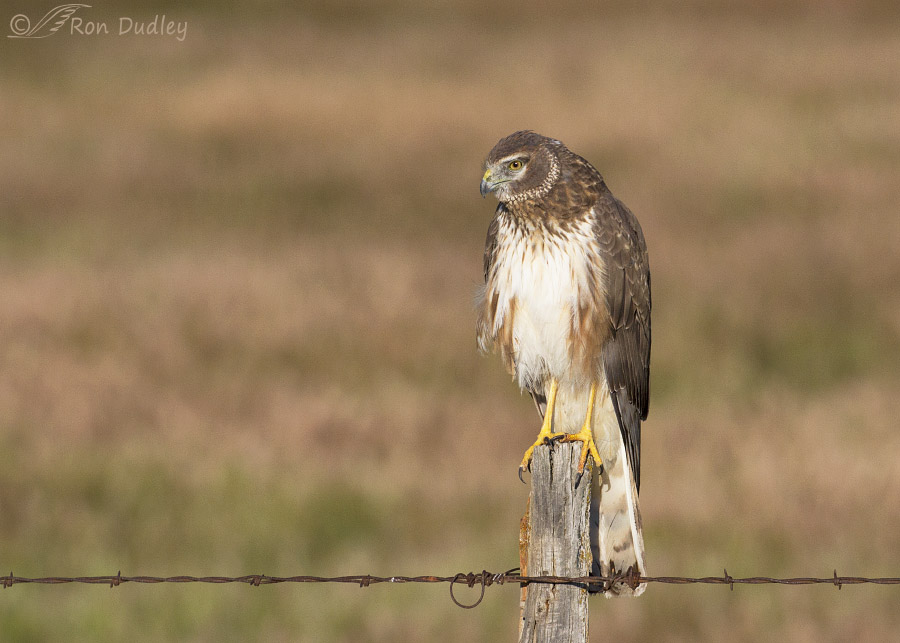
1/5000, f/6.3, ISO 500, Canon 7D, Canon EF 100-400mm f/4.5-5.6L IS II USM @ 312 mm, not baited, set up or called in
On May 30, 2016 in Box Elder County, Utah this Northern Harrier was unusually approachable and at first I didn’t know why. It was sitting on a fence post next to the road and unusual for harriers it didn’t fly off as I approached. I was so close I had to ditch my 500mm lens and use my “baby lens” attached to my older camera. I took a few shots before I got my first hint as to why it was so “sticky”.
We see that subtle hint in this photo where the bird has pulled its head down onto its neck which made the neck swell slightly more than usual.
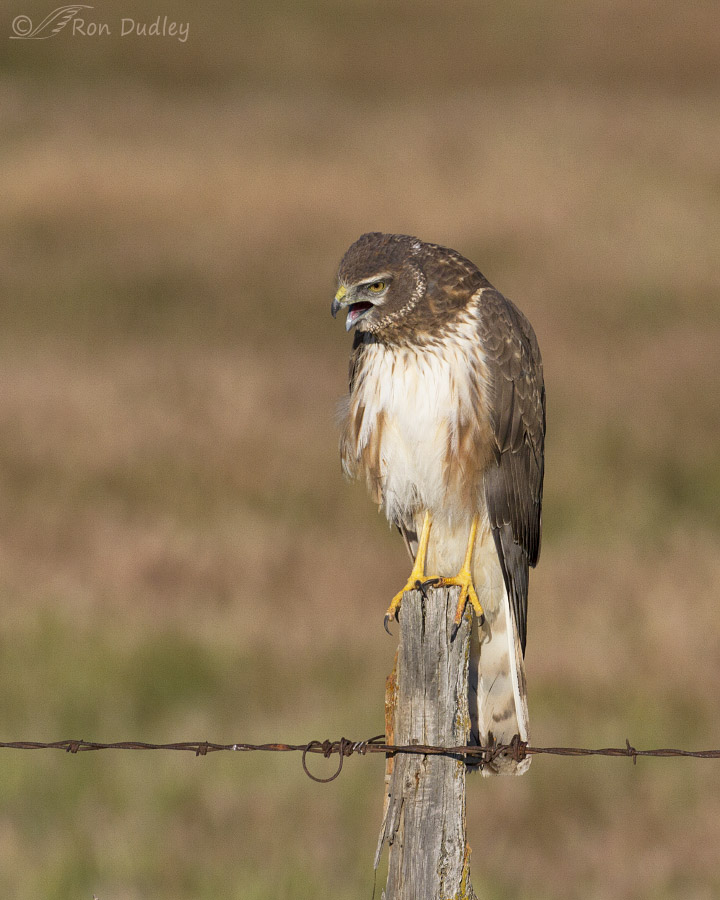
1/5000, f/6.3, ISO 500, Canon 7D, Canon EF 100-400mm f/4.5-5.6L IS II USM @ 312 mm, not baited, set up or called in
When it began to retch I was almost positive it was about to throw a pellet, a behavior I’ve seen and photographed many times before in a variety of raptor and other bird species.
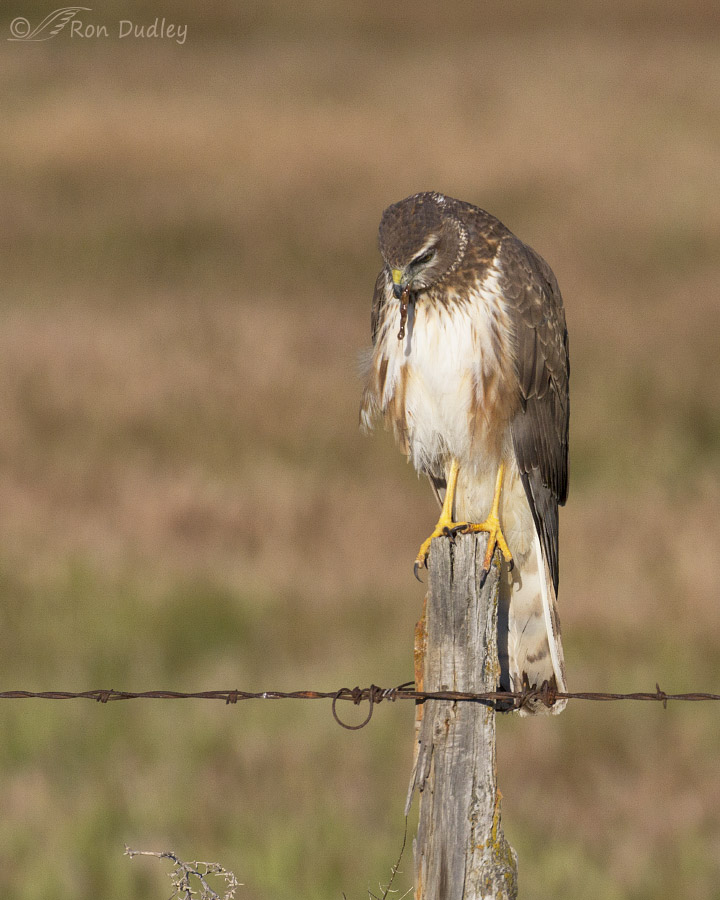
1/5000, f/6.3, ISO 500, Canon 7D, Canon EF 100-400mm f/4.5-5.6L IS II USM @ 312 mm, not baited, set up or called in
But after a bit of a struggle and more retching what came out wasn’t a typical compact and relatively dry pellet. Instead it was mostly runny and looked more like vomitus than a pellet.
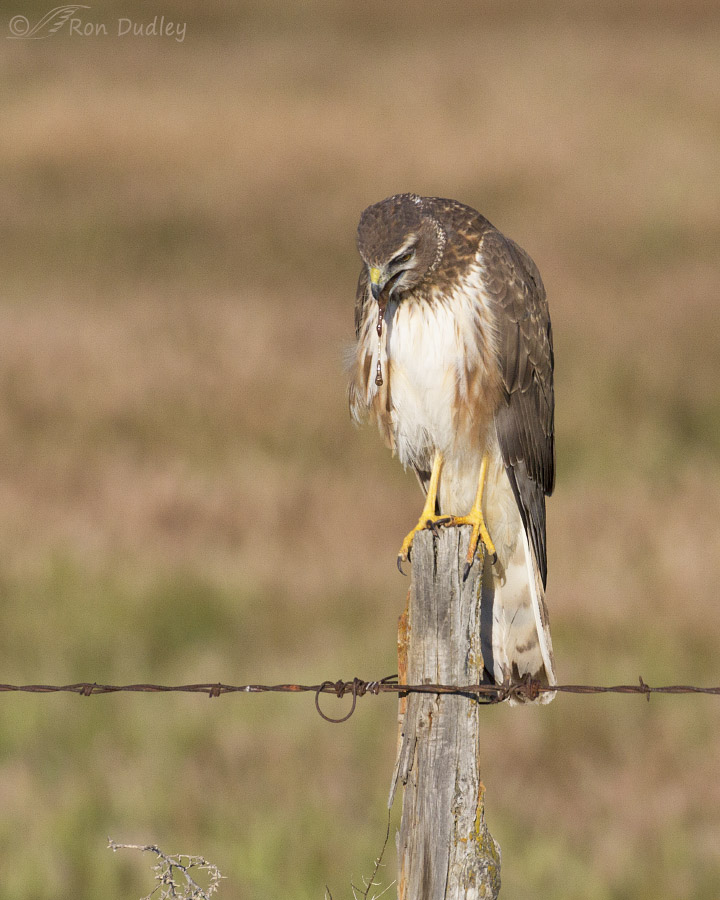
1/5000, f/6.3, ISO 500, Canon 7D, Canon EF 100-400mm f/4.5-5.6L IS II USM @ 312 mm, not baited, set up or called in
It was long, wet and stringy and it eventually…
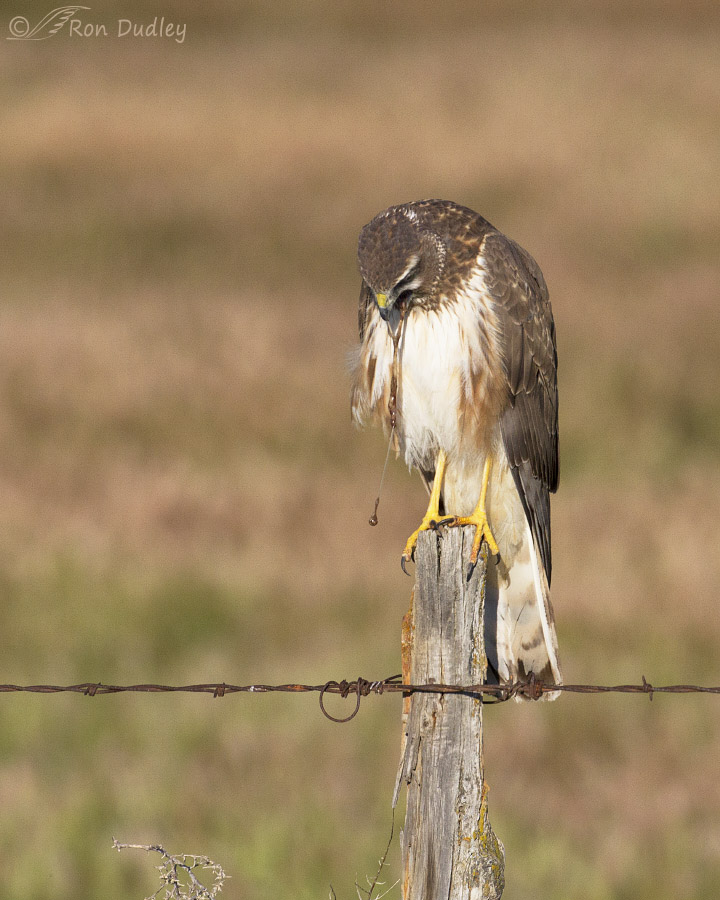
1/5000, f/6.3, ISO 500, Canon 7D, Canon EF 100-400mm f/4.5-5.6L IS II USM @ 312 mm, not baited, set up or called in
hung down to a length that was…
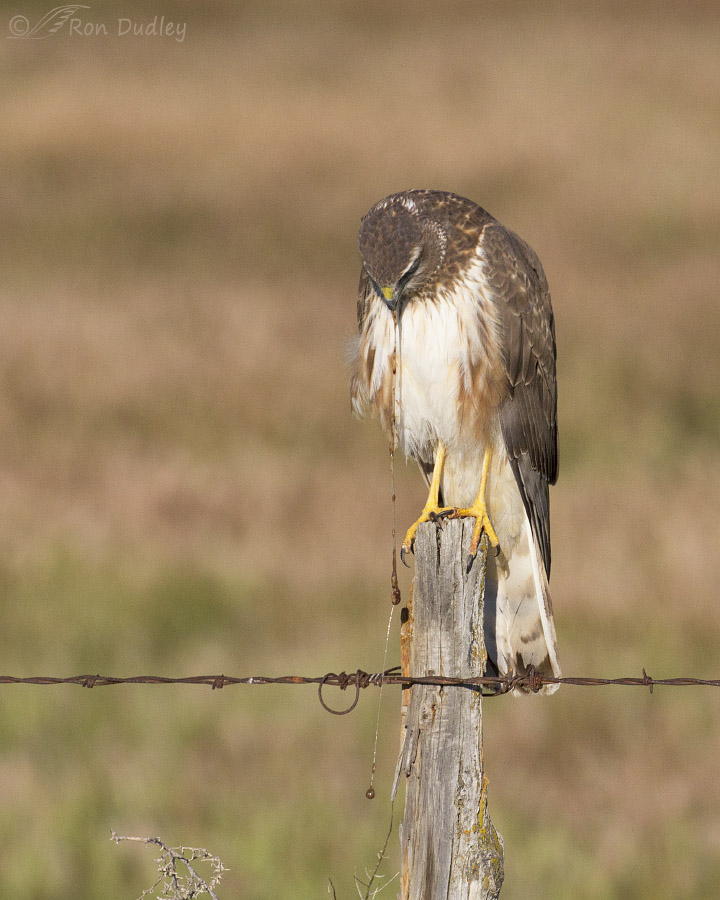
1/5000, f/6.3, ISO 500, Canon 7D, Canon EF 100-400mm f/4.5-5.6L IS II USM @ 312 mm, not baited, set up or called in
significantly longer than the entire body of the bird, including that very long tail.
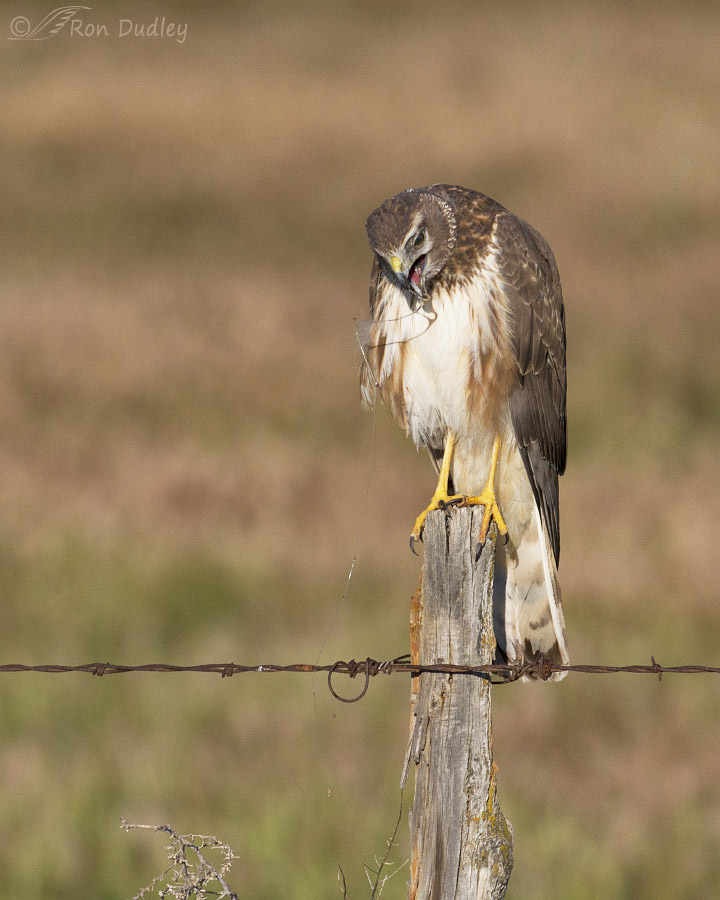
1/5000, f/6.3, ISO 500, Canon 7D, Canon EF 100-400mm f/4.5-5.6L IS II USM @ 312 mm, not baited, set up or called in
Eventually the hawk apparently grew weary of waiting for the stringy mass to fall off its bill so it shook its head to rid itself of the unpleasant mess.
To my untrained eye this appeared to be a case of vomiting rather than throwing a pellet. Birds do vomit (more can be found here if you have the interest) and just as in humans it can be a sign of anything from simple digestive disruption and discomfort to serious illness. I’ve photographed vomiting in birds at least two times previously and interestingly in each case it was a Northern Harrier. I have no idea if that’s simply coincidence or not.
But I doubt if this bird was seriously ill because soon after it accomplished its mission of expelling its digestive contents…
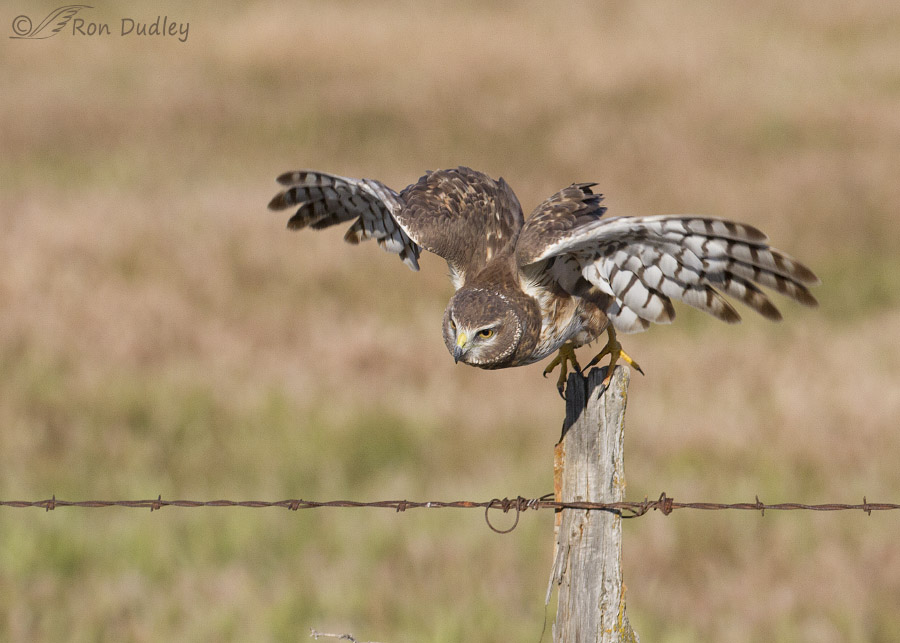
1/2500, f/6.3, ISO 500, Canon 7D, Canon EF 100-400mm f/4.5-5.6L IS II USM @ 248 mm, not baited, set up or called in
if flew off in apparent good health.
This is the only image in the series I’ve published previously. I posted it then because I was intrigued by that incredible curl of the right wing which I don’t think I’ve ever seen to this extreme in any bird before. Its shape actually reminds me a little of the hard red, white and green ribbon Christmas candy that some of us remember from when we were kids.
Birds can do amazing things when they need to.
Ron
Late addendum: Blog reader “Karen” may have solved the mystery as to why this harrier vomited. In her comment below she said “there is something that looks like a straight rod-like thing (highly technical term!) about the length of the bird’s head and in front of its right wing” and she wondered if that was the cause of the vomiting. So I looked at the high resolution version of the image and I think she may be right. To me it looks like it might be a feather shaft or a plant stem that the harrier had swallowed and couldn’t keep down.
Below is a highly cropped version of the image that shows more clearly what “karen” was talking about. Good eye, Karen!
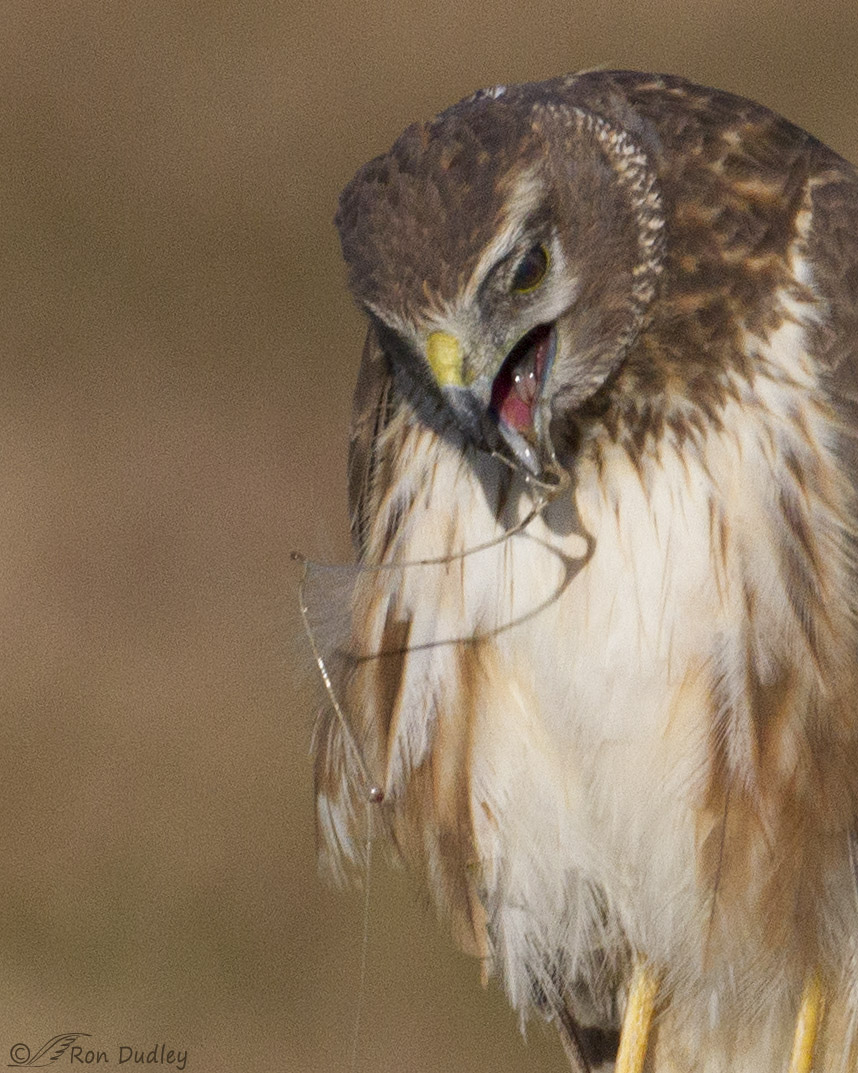


Sometimes, when you’re eating fast on the ground, ca-ca happens, including grasses, twigs and dirt/sand. That would usually get incorporated into the casting, but not always. Those pesky meal ingredients just gotta go, and like I said earlier, better out than in 😉
so interesting….as always, I love your posts and photos. In the second to last frame, there is something that looks
like a straight rod-like thing (highly technical term!) about the length of the bird’s head and in front of its right wing. Do you think
that could be what it was working to dispel because it wouldn’t get past the crop? Or perhaps it’s just an optical illusion and just part
of the string of saliva?
I believe you might be right, Karen. See my addendum above.
EXCELLENT eye Karen.
I love the angle on that last shot! Ron, I first witnessed this with an American Kestrel which was retching for quite a while. I too thought it was sick but it expelled a compact black-looking pellet. Lately I saw a Bald Eagle “vomit” a long string of pale, almost white, sticky liquid. I wondered what it might have eaten but maybe it was foamy mucus and caught the light.
Amazing behavioral series Ron!
Charlotte
Ron,
Great pictures and documentation. One issue: I have that candy every year. Love it. Why waste candy only on the young?!
Stephen
Not sure I’ve seen that candy since I was a kid, Stephen. We always used to get it in our Christmas stocking.
Hammond’s in Denver still makes ribbon candy with a hand crimper. The tour is worth it and a little birdie told me they have some Christmas candy on sale.
EC beat me to the “better out than in” punch. I always feel good when we’re on the same wavelength.
Well, it’s about lunchtime here… 😉
Enjoy, Marty. I hope you can keep it down! 🙂
Yes, they do sometimes throw up. There’s even an ancient and arcane falconry word for that–cast gorge. It doesn’t happen often, but if something doesn’t sit right in the crop, up it comes under the rubric of better out than in.
In falconry language, “throw up” means to rise steeply on outstretched wings, particularly after a stoop as the hawk converts the kinetic energy of their dive into potential energy of altitude and the possibility of another strike from the altitude.
THERE! Now you’ve learned something new today 🙂 It’s only fair since you teach me so much!
Laura, I’m a bit of a word origin freak so I always appreciate the historic falconry tidbits you often share with us.
Better out than in.
That wing curl is amazing. Beautiful and incredibly efficient and effective.
“Better out than in”
I like how you often cut so quickly to the chase, EC! And yes, that wing curl really caught my eye.
Love your photos as well as the education! Thank you for sharing with us!
Thanks, Kelli. Good to have another Dudley around! I don’t run into many of “us” so I take notice when I do.
Love these shots, not just because of the behavior, but also the beauty of this species.
Good! Thanks, Dick.
That poor bird! I sure hope it was OK!!!
I’m pretty sure it was, Patty. If I remember correctly (and I think I do) it resumed normal hunting behavior right after that last shot was taken.
Interesting Ron. I will get back to eating my breakfast now 😉
You can really see how long the harriers legs are in your photos. They seem to have very long legs, proportionally, compared to other raptors.
That wing curl is very neat !
Thanks for the education!
Ha, I was hoping I wouldn’t ruin anyone’s breakfast or morning coffee, Ed. Hope you got yours down!
Yes, harriers are known for both their long tail and their long legs. Thank you.
The thing I’ve learned the most from a few years observation and staying put trying to get decent photographs of birds is how hard birds work! They are fit athletes who are fly, hunt, move and stretch constantly! Always planning ahead, taking care of their feathers, and on the alert for the next meal or approaching predators.
I’ve always wondered about the biblical statement – “Look at the birds of the air… etc”. Seems to me these critters work harder than most humans.
You’re right about how hard they work, Joanne. It often seems like they’re always doing something. They can make me tired just watching them!
As always great pictures !!! Why is it stringy so???? Also I forwarded your guide to aging eagles to a freind because she posted a bird as a Golden and I’m pretty sure it’s a bald thanks to your guide
“Why is it stringy so”
Marina, mucus is at least part of the reason for that. Mucus is needed to make food slippery in the alimentary canal so it moves along easily and mucus is thick and cohesive.
That eagle post gets a lot of views, partly because folks do what you did with your friend. Thank you.
Awesome Ron.
Thanks, Brian.
Interesting series, Ron – would be more appreciative if it weren’t for norovirus wasn’t going around our house…………… 🙁 Wing twist is amazing!
Wow, bad timing for you, Judy! Good for you for sticking it out despite the circumstances.